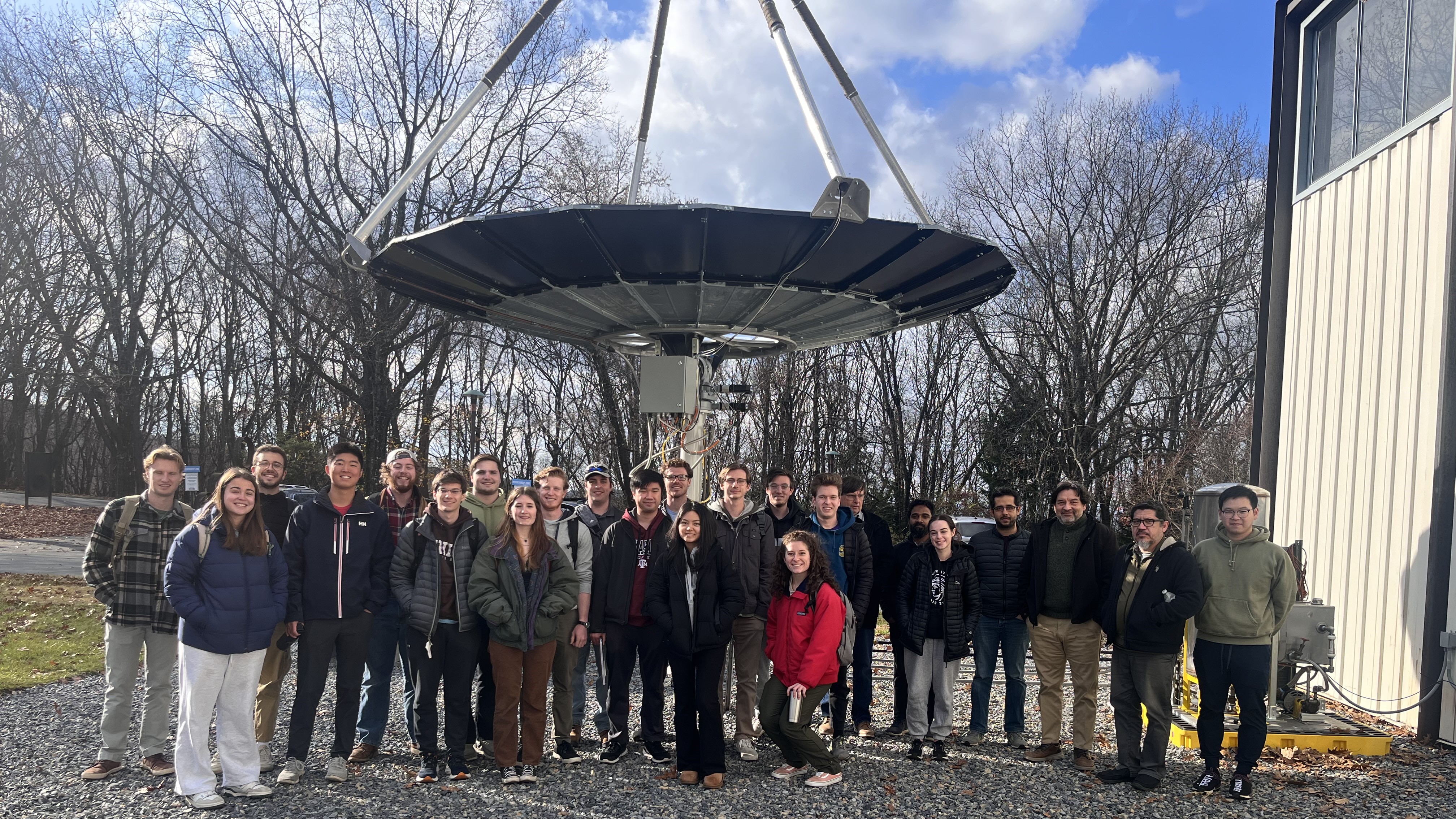
Students in the Renewable Energy (ME 364/464) class taught by mechanical engineering and mechanics research full professor Carlos Romero recently got an up-close look at a new solar thermal concentrator installed on the Mountaintop campus.
The new equipment is the result of a collaboration involving Lehigh’s Energy Research Center (ERC; Dr. Romero is the director), the Department of Mechanical Engineering and Mechanics (MEM), and industry partner Solarflux Energy Technologies. The Pennsylvania-based company develops and manufactures solar thermal collectors and related technologies for industrial applications.
 This isn’t just a typical solar setup: The concentrator is equipped with a precise two-axis tracking system that automatically follows the sun's path throughout the day to maximize the solar energy collected. It uses a charge-coupled device (CCD) camera and GPS to automatically locate and align itself with the sun, achieving a high degree of accuracy.
This isn’t just a typical solar setup: The concentrator is equipped with a precise two-axis tracking system that automatically follows the sun's path throughout the day to maximize the solar energy collected. It uses a charge-coupled device (CCD) camera and GPS to automatically locate and align itself with the sun, achieving a high degree of accuracy.
The system uses Dynalene-SF as the heat transfer fluid in a flow loop for operation at 310°C, and it is powered by local photovoltaic (PV) panels, making it a real-world example of sustainable energy practices in action.
During the tour, students were guided by John Fangman of Solarflux, who broke down the design and workings of the concentrator in a way that connected classroom knowledge to real-world applications. The experience gave students a glimpse into the technology while providing a practical understanding of how renewable energy systems function.
What makes this solar concentrator stand out is not just its technical capabilities but also its practical applications. With a 10 kWth peak power rating, the concentrator is not going to power the whole campus, but it is a significant addition and will serve as an instructional tool and test bed for student research projects.
The concentrator is already lined up for research at the ERC, says Romero. The equipment will be used in projects focusing on high-temperature coupled solar thermal energy, thermal energy storage, and thermochemical solar water splitting for hydrogen production.
